Home Economics focuses on developing practical skills, critical thinking, and design-based problem-solving to manage personal and family resources effectively. Students will gain hands-on experience in foods and textiles, fostering healthy lifestyles, creativity, and efficient management skills. Courses emphasize healthy food choices, meal planning, clothing construction, and understanding diverse cultures, preparing students for future careers, personal growth, and adapting to social, economic, and technological changes.
Grade 8
All grade 8 students at Burnaby North take ADST 8, which includes one term each of Home Economics, Business Education, and Technology Education, allowing them to learn a wide range of practical skills.
 |
 |
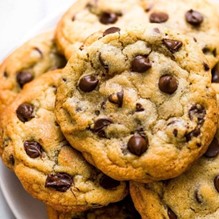 |
Home Economics 8 (required component of ADST 8)
- All grade 8 students at Burnaby North take ADST 8, which includes one term each of Home Economics, Business Education, and Technology Education, allowing them to learn a wide range of practical skills.
- In the Foods section, they will learn basic baking and cooking techniques to prepare a variety of quick dishes.
- In the Textiles section, students will acquire basic sewing skills, which include hand and machine sewing.
Grades 9-12
Food Studies
NOTE: Our Food Studies program is structured in three levels to ensure students build skills and knowledge progressively, with each level increasing in complexity. Students are encouraged to choose the appropriate level based on their experience, skills, and teacher recommendations to set themselves up for success and get the most out of the program.
Skills Exploration 9/10 (Foods Level 1)
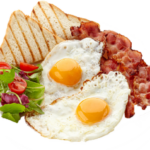 Designed for students in grades 9-10, especially those who have completed ADST 8 or haven’t taken a high school Foods course.
Designed for students in grades 9-10, especially those who have completed ADST 8 or haven’t taken a high school Foods course.- Covers basic food safety and preparation techniques in baking and cooking.
- Students develop the knowledge, skills and attitudes necessary to prepare nutritious, tasty, attractive foods in a safe, cost and time-effective manner.
- Explores how food is prepared in a commercial environment and how the food industry is linked to tourism.
- Develops communication and collaboration skills through kitchen unit activities.
- The units are organized by the meals of the day (breakfast, lunch, dinner, and dessert).
World Cuisine 10-12 (Foods Level 2)
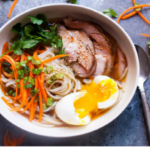 Intended for students in grades 10-12 who have completed Food Studies Level 1 or have practical food industry experience
Intended for students in grades 10-12 who have completed Food Studies Level 1 or have practical food industry experience- Develop food safety and preparation skills through a variety of recipes and cultural cuisines.
- Work in groups to use the design process for meal planning, considering economic, social and environmental constraints.
- Examine food systems and explore how various factors influence the food we eat locally and globally.
- Units of study may include:
- North American and Indigenous food
- International cuisine –
- Chinese, Japanese, Italian, French Cuisine are examples
- Meal design
- Health and diet
*Note: Can be taken consecutively as cuisines rotate through different countries each year. *
Food Design 10-12 (Foods Level 3)
 Intended for students in grade 11-12 who have taken Food Studies Level 2 or have practical experience in the food industry.
Intended for students in grade 11-12 who have taken Food Studies Level 2 or have practical experience in the food industry.- Students will participate in complex meal and recipe design challenges, using the design process, and will develop skills in cooking without a recipe.
- Mainly working in pairs, students will often have choices in the recipes and activities they complete, with teacher support and guidance.
- The course explores global food themes such as food security, sustainability, specialty diets, food marketing, cultural appropriation, and food justice.
- Students will also develop skills in advanced cooking techniques, use of specialized tools, plating, presentation, and food photography.
Baking 11-12
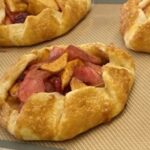 Emphasis on developing advanced baking skills for both the home and professional baker.
Emphasis on developing advanced baking skills for both the home and professional baker.- Learn how to make baked goods such as basic quick breads (cookies, muffins, biscuits), standard pastries, cheesecake, yeast breads, custards and tortes.
- Learn the arts of cake decorating (butter cream and fondant), garnishing and plating.
*Note: Can be taken consecutively as products alternate from year to year. *
Catering 10-12
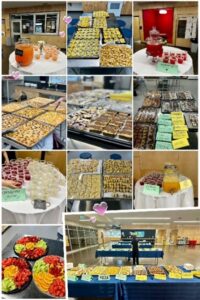 Provide students with advanced culinary skills and knowledge related to the food service industry
Provide students with advanced culinary skills and knowledge related to the food service industry- Focus on menu planning, food preparation, presentation techniques, and event catering
- Learn about safety and sanitation, customer service, and business aspects of catering, preparing them for potential careers in the food industry or further education in culinary arts
- Opportunity to earn FOOD SAFE Certification upon completion of course and passing exam
*Note: Can be taken consecutively as catered events change each year. *
Peer Tutoring 11-12 (in Food Studies and or Textiles)
- Prerequisites: Teacher approval required
- Eligibility: Students with prior experience in Foods classes
- Requirements:
- Reliable and dependable
- Willing to support class routines and stay organized
- Interested in building connections with peers and teachers
- Role: Assist in class activities, provide support, and foster a positive learning environment
TEXTILES
TEXTILE ARTS: May include quilting, knitting, crocheting, spinning, weaving, dyeing fabrics, or other textiles related art – depending on interest and resources.
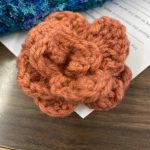 Textiles 9
Textiles 9
Builds on basic sewing skills developed in Home Economics 8.
- Students will learn how to use home sewing machines as well as develop weaving, knitting and/or crocheting skills and the basics of fabric care.
- Students will work with woven fabrics. Projects may include the following: a facemask, a pair of shorts or pyjama bottoms (with or without pocket), small plushies…
 Textiles 10
Textiles 10
Further development of sewing skills and techniques for fitting and pattern adjustment.
- Students will learn about fiber traits as well as the basics of garment production.
- Students may work with wovens, stretch wovens, knits and/or slippery fabrics. Projects may include more challenging Textiles 9 projects and/or the following: a fitted skirt or fitted pair of pants, a housecoat, a hoodie, and/or a dress or shirt.
Textiles 11
Introduction to simple textile design, and more complex textile machinery.
 Students will explore environmental, historical and social impacts on fashion/textile design and fashion marketing.
Students will explore environmental, historical and social impacts on fashion/textile design and fashion marketing.- Projects may include more challenging Textiles 10 projects and/or the following: a bathing suit, a lined skirt or pair of pants, a blouse or yoked shirt and/or a small quilt.
Textiles 12
Introduction to complex textile design and tailoring.
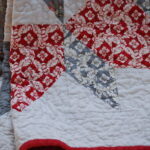 Students will continue to research environmental, historical and social impacts on fashion / textile design and fashion marketing.
Students will continue to research environmental, historical and social impacts on fashion / textile design and fashion marketing.- Students will advance skills such as tailoring and learn to make challenging projects including a lined jacket, a full-sized quilt and/or a formal gown.
*All projects will be chosen by the student in consultation with the teacher based on skills and abilities, and degree of difficulty.
Fashion Industry 12
An introduction to the fashion industry.
-

Students will continue to research environmental, historical and social impacts on fashion / textile design and fashion marketing.
- Students will advance skills such as tailoring and learn to make challenging projects including a lined jacket, a full-sized quilt and/or a formal gown.
- Students will make artistic and technical drawings, conduct fibre and care research and cost analysis, and assemble the mini-line to present to their peers.
- Sewing experience and/or Textiles 11 are highly recommended for this course.